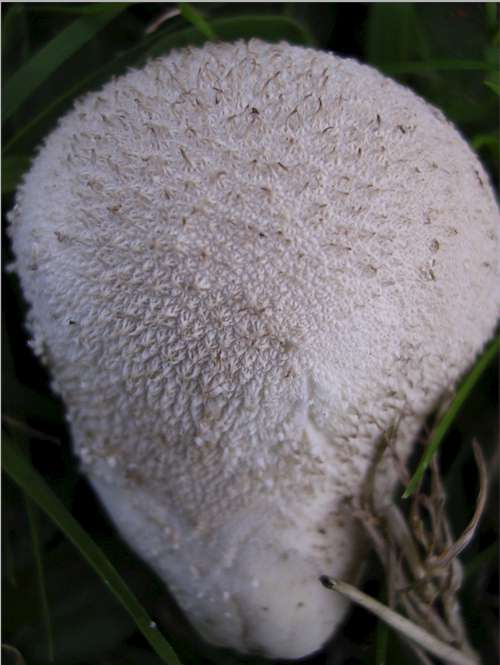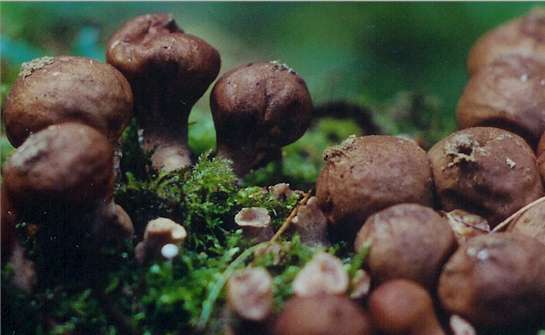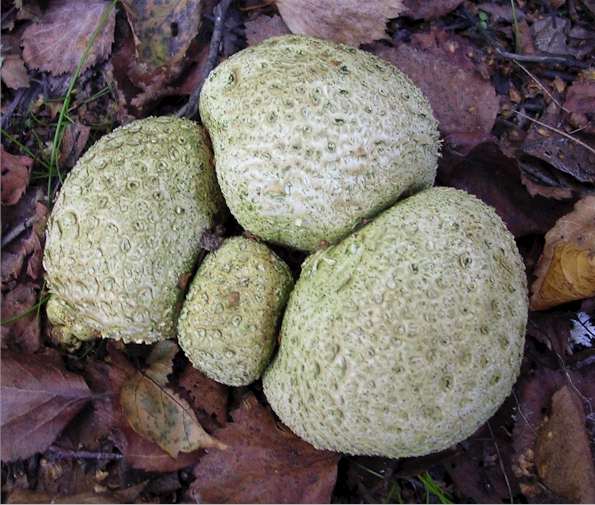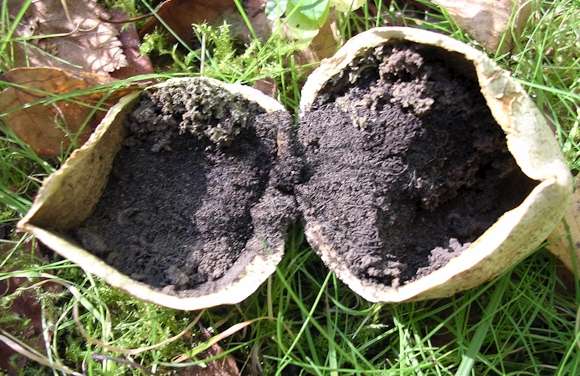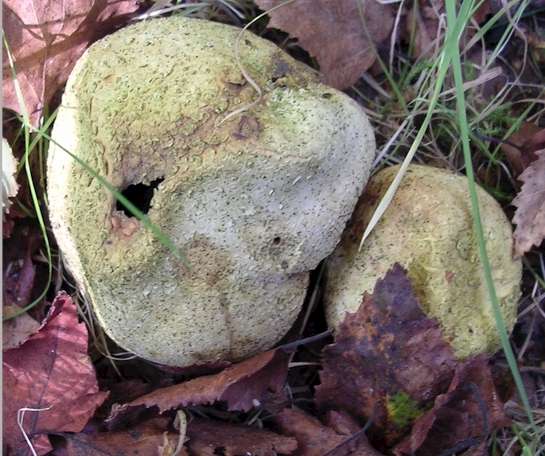..
PROFILES OF FUNGI : PUFFBALLS, EARTHBALLS, EARTHSTARS AND SIMILAR FUNGI
The cover illustration of Modern Mycology (3rd Edition) - Puffball Lycoperdon pyriforme expelling spores. [© Barrie E. Watts, Oxford Scientific Films Photo Library] Several fungi that grow on rotting wood produce pear-shaped or rounded fruitbodies. Spores are produced within these fruitbodies and, when mature, they are released through a pore or a tear that develops near the top of the fruitbody. The classic example of this is a typical puffball of the genus Lycoperdon (see the image above, and Figs 1-3). Initially, the puffball has a firm, rubbery consistency and is surrounded by a two-layered rind, termed a peridium. Within the peridium the hyphae produce a large number of basidiospores. When these mature the outer layer of the rind breaks down, leaving a papery, thin-walled peridium, and finally a pore or crack develops near the top. The spores are then dispersed when raindrops strike the surface of the thin peridium and release a puff of spores. So the puffball acts like a bellows. The puffballs are classified mainly in the genus Lycoperdon, and they are saprotrophic, usually growing on wood above or below ground, anchored to the underlying substrate by mycelial cords (see Fig. 1 below). However, some of the larger puffballs have been assigned to other genera such as Calvatia, and the largest puffball of all (Langermannia gigantea) can reach the astonishing size of 80 cm diameter - about 5 times larger than a human head! Puffballs of this size normally break free from the mycelial cord system and roll along the ground, releasing their spores through a break in the sac-like peridium.
Fig 1. A group of immature puffballs growing on a wooden log and attached to the substrate by a network of mycelial cords. The fruitbodies are white at first but later darken when they mature. [© Jim Deacon]
Fig 2. A single puffball, Lycoperdon perlatum, about 5 cm tall, photographed in late summer. The fruitbody is white at first and covered with pyramidal warts, but darkens with age to yellowish-brown. This solitary specimen was attached by mycelial cords to wood below ground level. [© Jim Deacon]
Fig 3. A cluster of mature puffballs (Lycoperdon pyriforme) growing from a fallen, moss-covered log. Each puffball is about 6 cm tall. Note the conspicuous apical pore and the thin, papery consistency of the mature fruibodies. [© Jim Deacon] The "Common Earth Ball", Scleroderma citrinum has a similar behaviour to that of puffballs. It is often seen on heathlands or in rich woodlands, eather singly or (more often) in small clusters (see Figs 4, 5, 6 below). In its immature stage it has a thick, crusty wall. When mature, it breaks open irregularly to release the spores.
Fig 4. Immature fruitbodies of Scleroderma citrinum (the common earth-ball), frequently seen as clusters in leaf litter beneath deciduous trees, in late summer. The fruitbodies range from 3-10 cm diameter. They have a dirty, lemon-yellow coloration and a warty outer coating. [© Jim Deacon]
Fig 5. When broken apart at the near-mature stage, fruitbodies of S. citrinum are seen to have a thick outer wall and to be filled with a mass of purple-black spores. [© Jim Deacon]
Fig 6. At maturity the fruitbody of S. citrinum breaks open irregularly to release the spores through an apical pore. [© Jim Deacon] |


